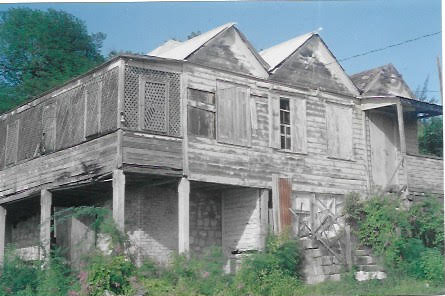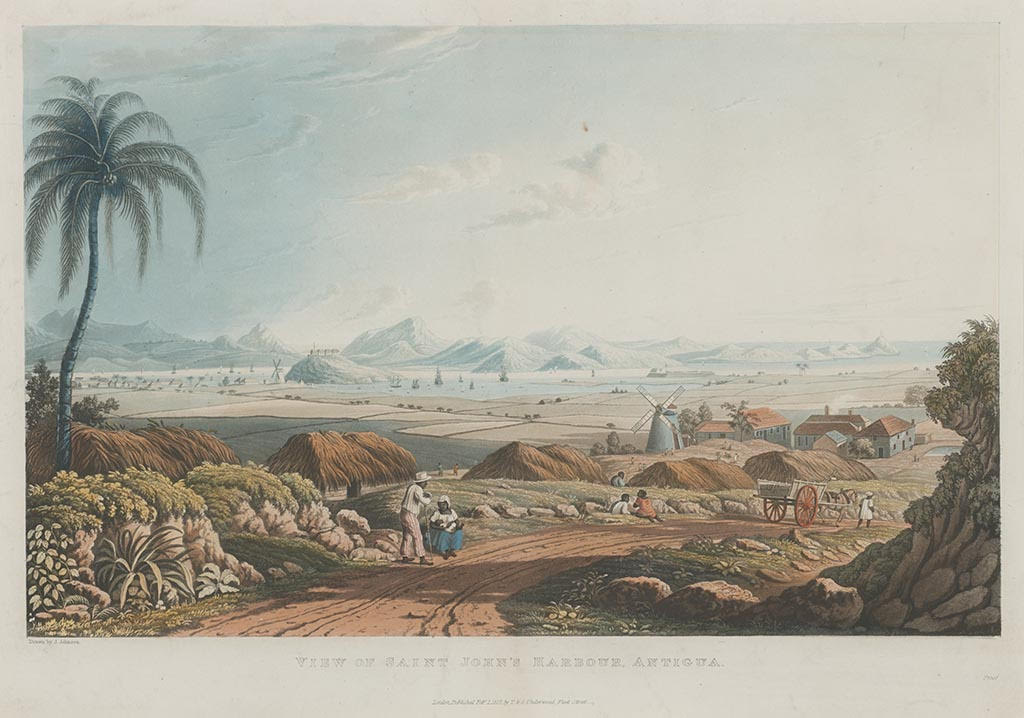About
Type: Ruin
Parish: St.John
Founding date: 1679
See on Google Maps!

Current Status
The old estate house was demolished in 2002, no sugar mill stands at this site, and there is no evidence of the former sugar works. The road leading out of St. John’s to the north side of the island carries the name Friars Hill Road, as does the hill that rises past where the estate house originally stood.

Estate Related History/Timeline
“The road leading from Gambles Estate (#14) in a northerly direction, runs in a straight line for upwards a mile, planted on either side with Cocos and Cedars, which by extending an agreeable shade, give an additional interest to the bright and animated scene of Friars Hill, the Houses of the Negroes attached to the property, prettily arranged in rows on the hillside, adjacent to the works, and all the bustle of plantation business suddenly arrest the attention.”
Historical & Descriptive Account of Antigua, 1830
This estate was abutted by Dunbar’s (#8) to the north, Cedar Valley (#42) to the east, and McKinnon’s (#10) to the west.
Antonio Joseph Comacho owned A. J. Camacho & Co., an export and merchant business. His son, Emmanuel O. Camacho inherited the business and ran it until 1918. By the time Emmanuel died in 1894, he owned more than 1,600 acres of sugarcane under cultivation, having purchased several other plantations. He was the single largest landowner in Antigua besides the Maginley family. Emmanuel was a staunch supporter of the Catholic Church.
In 1933, with the abolition of slavery by the British Parliament, the estate was awarded £1,984. 16s. 10d. (Antigua 37) for 137 freed slaves.
In 1948, the Secretariat Office on the Government House property burned to the ground, and the office was relocated to the Friars Hill estate house while the government office was rebuilt.**
During the administration of George Walter (1970 – 1975), the Friars Hill estate house was the home of V. C. Bird, who purchased the property for $7,000 and had it repaired by Sam Benjamin, of the Public Works Department, for $21,000. Selvyn Waters.
** Author’s note: My grandmother, Margaret Conacher (nee McSevney) managed the Secretariat Office, and I remember riding my bike up Friars Hill Road to meet her at the government offices after Girl Guides at the Antigua Girls High School.
Margaret White, an heir of Montague White, tells the story of driving through Cedar Grove and stopping to ask an old man on a donkey for directions. He asked her about her family, and upon hearing she was related to the White family, he told her Montague White, while living at Hodges Bay House, had a reputation for ill-treating his slaves.
The Antigua Sugar Factory Ltd. cane returns for the 1941 crop were estimated at 982 tons, 572 peasants on the estate, and 16.08 tons per acre.
1885-1892: Papers, Correspondence and Plans: Hopkins: Friars Hill, Antigua: No. 178. Held by The National Archives, Colonial Office. Reference No. CO 441/15/15.
Enslaved People’s History
Based on contemporary research, we have little information to share about the enslaved peoples from this plantation at this time. What is known is that, at most, there were 166 slaves. In 1933, with the abolition of slavery by the British Parliament, the estate was awarded £1,984. 16s. 10d. (Antigua 37) for 137 freed slaves. An interesting anecdote is that Margaret White, an heir of Montague White, tells the story of driving through Cedar Grove and stopping to ask an old man on a donkey for directions. He asked her about her family, and upon hearing she was related to the White family, he told her Montague White, while living at Hodges Bay House, had a reputation for ill-treating his slaves. We will continue our quest for more information about these vital individuals.
Ownership Chronology
- 1679: Dorothy Clarke, widow of St. Christopher, sold the 96 acres of “Fryers Hill in the Popeshead Division to Francis Carlisle.”
- 1734: Francis Carlisle, merchant
- 1745: Thomas Walkin
- 1750: Heirs of Thomas Walkin
- 1790: Thomas Oliver (1777/78 map by cartographer John Luffman.) This was an indenture lease by Godschal Johnson, Esq., of London, and Samuel Eliot, Esq., late of Antigua but now of Harley Street
- 1829: Capt. Haynes, Royal Navy. 230 acres, 166 slaves.
- 1843: Haynes
- 1852: Mary Thomas 230 acres
- 1872: Lady Thomas 327 acres
- 1878: Montague White
- 1891: Henry Ogilvie Bennett. Purchased solely as a residence
- 1893: Antonio Joseph Comacho. d. 1894
- 1921: Aubrey J. Camacho
- 1933: Mrs. Aubrey J. Camacho
- 1970 – 1975: Vere Cornwall Bird, Antigua’s first Prime Minister (1981)